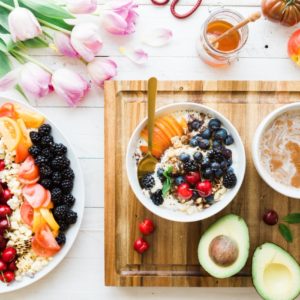
(If you’re sick of me chatting, here’s a synopsis of this post: Most dishes — even the fancy stuff — contain cadmium and lead, that can leach into your food. For a healthy, unique, lead-free alternative, below are links to silverware made from rosewood and bowls made from reclaimed coconuts or fallen trees. Charming, to say the least.)
A few months ago, Rock and I were snuggled up watching our favorite show, while I consumed a smoothie bowl big enough to feed a small family. As Rock rearranged his gorgeous bod on my lap, words on the bottom of my bowl caught my eye: ‘Made in Indonesia’. Wait… Is that bad? It can’t be. I mean, they were bought from some silly, overly-fancy store on Michigan Avenue.
After pretty brief research, I found out they were made using lead and cadmium. Ewww. So yea, not good. While true, they’re sealed with a food-safe glaze, that doesn’t mean lead won’t leach out. Regardless (or, irregardlessly, as I enjoyed hearing someone say today), given what we know about the effects lead has on our health, I want to minimize my family’s exposure as much as possible. We still use the fancy stuff, but for every day use, eating from lead-free dishes is our go-to.
That’s where these lovely bowls made out of reclaimed, organic coconut shells come in. They are handmade by a Taiwanese stay-at-home mom, named Nipa Vilaipan, who makes the bowls out of handpicked coconut shells from her local village. The dishes are adorable and exactly what you’d think eating out of a brown, hollowed-out coconut shell would be like. Using them makes me feel like I live in a bungalow in Bali. (A girl can wish.) They’re about $6 each. Although they take some time to arrive to the US, the packaging is so adorable that it’s worth the wait.
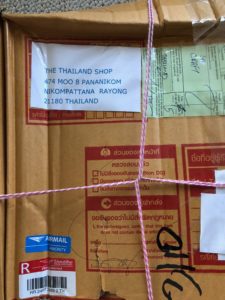
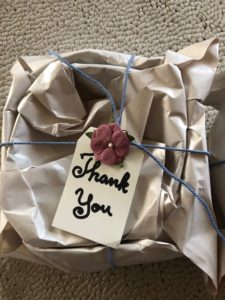
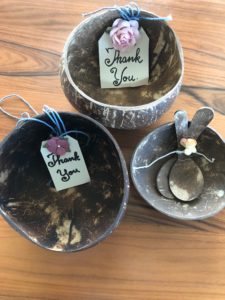
Clearly, I’m a bowl — not a plate — person. I eat veggies, soups, and smoothie bowls religiously, so plates are of no interest to me. Fellow soup-addicts, you get me. Now, if the coconut bowl isn’t your thing, check out Reginald Stanley’s shop, Wood Expressions. Reginald collects wood from trees across the country that have been damaged by a storm. He then oils and waxes the wood with a natural wax and orange oil combination that his wife makes. Charming enough for you? Yea, me too. His stuff is gorgeous. Although the coconut bowls are fun and different — hippie-chic, if you will — Reginald’s bowls are a more sophisticated yet rustic, with a lovely, smooth finish. You can tell he puts love into each one.
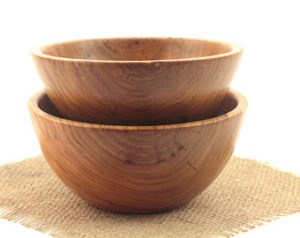
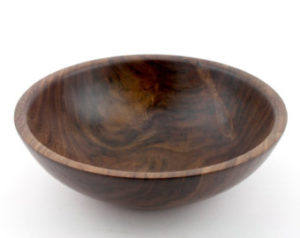
Now to the silverware. I adore these rosewood spoons and forks, coated only with olive oil. They’re handmade in Thailand as well, by a man named Tiwarat Panyakong. I’ve used the same pair for months now, and they hold-up beautifully. I have also used them to scrape a hot pan, and they neither burned nor did they wear down. They’re weirdly inexpensive, too. I adore them, as you can tell.
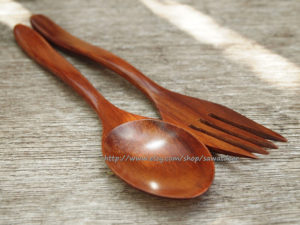
If none of those options float your boat, I recommend buying something handmade locally or from Etsy. Save the fancy, chemical stuff for dinner parties (hopefully the shenanigans of your boozed-up party guests will be the focal point, anyway) . For every day noshing, get a little collection going of healthy alternatives and try to stay away from the mass-produced stuff sold in commercial stores.
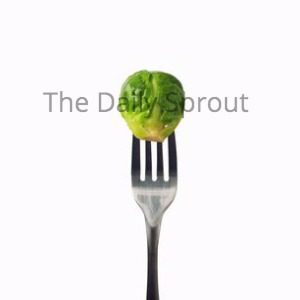
This is very interesting. I have been looking for kitchenwear and now know what to get
Love your blog!
I don’t know that I’d trust those. Lead is found naturally in the environment and some plants do pull it up. Unless its lab tested you won’t know if its lead free. The tools used to make them might contain lead.